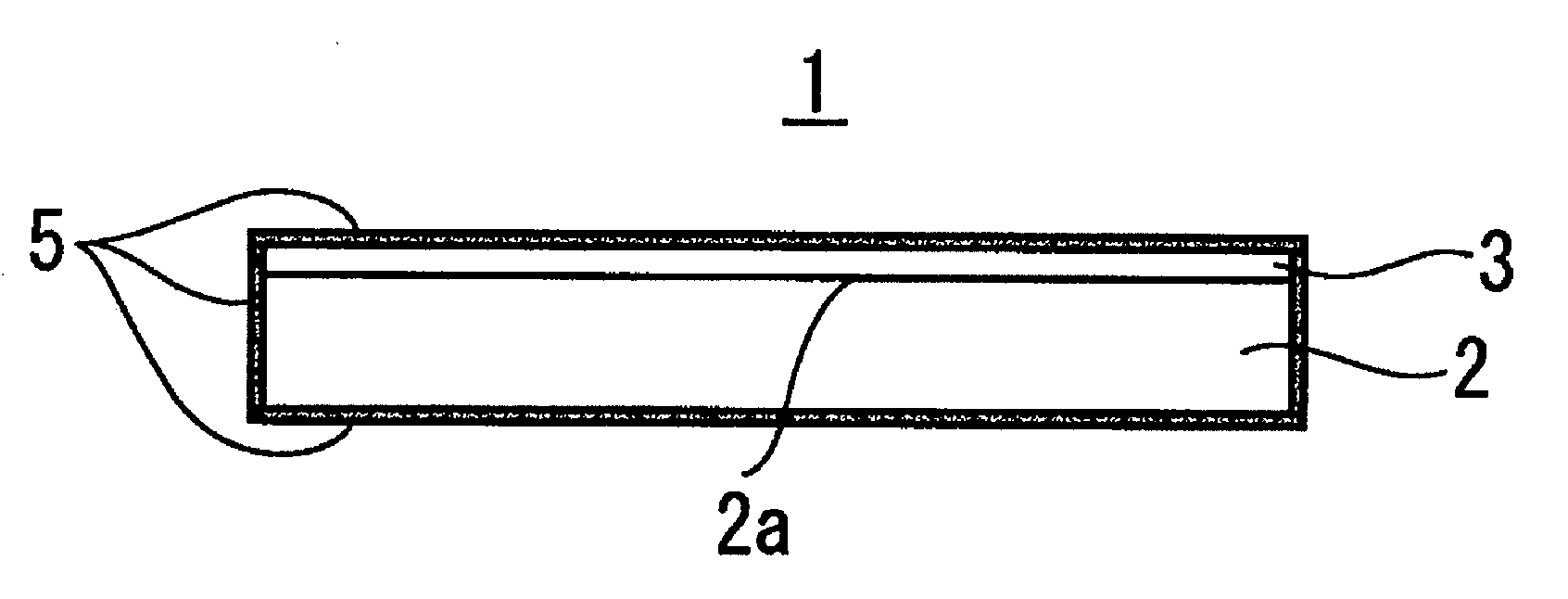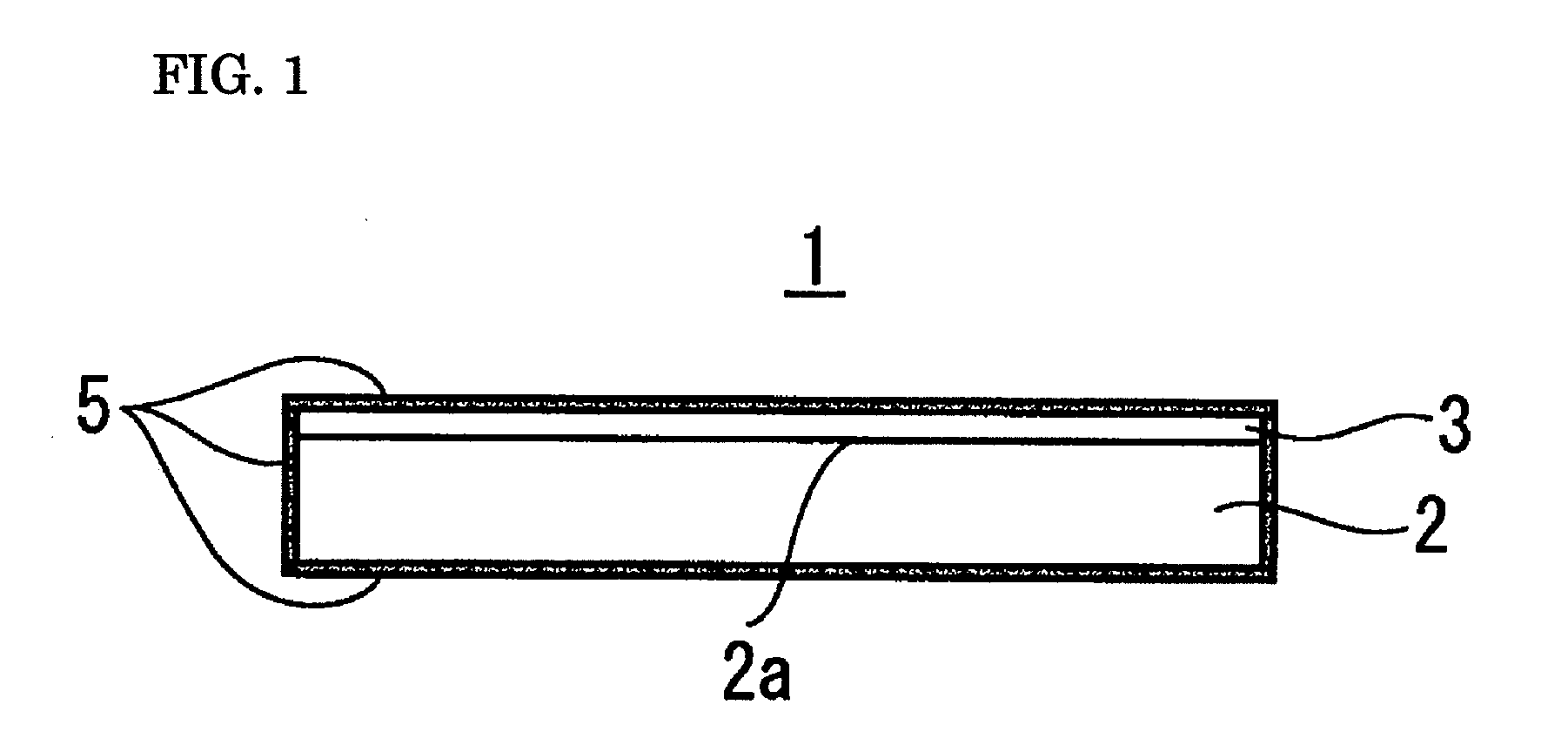Porous multilayer filter and method for producing same
a multi-layer filter and porous technology, applied in the field of porous multi-layer filters, can solve the problems of affecting the yield of products, reducing the productivity of products, and difficult to balance the treatment rate and particle retention efficiency, and achieves stable permeability, high flow rate, and preservation
- Summary
- Abstract
- Description
- Claims
- Application Information
AI Technical Summary
Benefits of technology
Problems solved by technology
Method used
Image
Examples
examples of first embodiment
[0135]First to fifth porous multilayer filters including filtration layers 3 having varying bubble points were fabricated as examples.
example 1
[0136]With respect to a main body of a filtration layer, 18 parts by mass of a liquid lubricant (Supersol FP-25 manufactured by Idemitsu Kosan Co., Ltd: (constituent: naphtha)) was added and mixed to 100 parts by mass of PTFE fine powder (PTFE 601 A manufactured by DuPont). The resulting mixture was subjected to compression molding in a molding machine to form a block-like shaped body.
[0137]Next, the block-like shaped body was continuously extruded into a sheet-like shape. The sheet-like shaped body was passed through pressure rolls, further passed through heating rolls (130° C. to 220° C.) in order to remove the liquid lubricant, and wound up on a roll to obtain a sheet of 300 μm.
[0138]Next, with respect to a sheet for the main body of the filtration layer, after stretching at a magnification of 2 times in the longitudinal direction (machine direction) at a roll temperature of 250° C. to 280° C., stretching is further performed at a magnification of 4 times under the same temperatu...
example 2
[0144]In the filtration layer 3, the amount of addition of the liquid lubricant was changed to 20 parts by mass relative to the resin 601A (manufactured by DuPont). The longitudinal stretch magnification was set at 8 times, and the lateral stretch magnification was set at 30 times. The bubble point of the filtration layer 3 was set at 250 kPa, and the size of target particles to be trapped was set at 0.05 μm. Otherwise, the structure was the same as that of Example 1.
PUM
| Property | Measurement | Unit |
|---|---|---|
| porosity | aaaaa | aaaaa |
| pore size | aaaaa | aaaaa |
| thickness | aaaaa | aaaaa |
Abstract
Description
Claims
Application Information
 Login to View More
Login to View More - R&D
- Intellectual Property
- Life Sciences
- Materials
- Tech Scout
- Unparalleled Data Quality
- Higher Quality Content
- 60% Fewer Hallucinations
Browse by: Latest US Patents, China's latest patents, Technical Efficacy Thesaurus, Application Domain, Technology Topic, Popular Technical Reports.
© 2025 PatSnap. All rights reserved.Legal|Privacy policy|Modern Slavery Act Transparency Statement|Sitemap|About US| Contact US: help@patsnap.com



